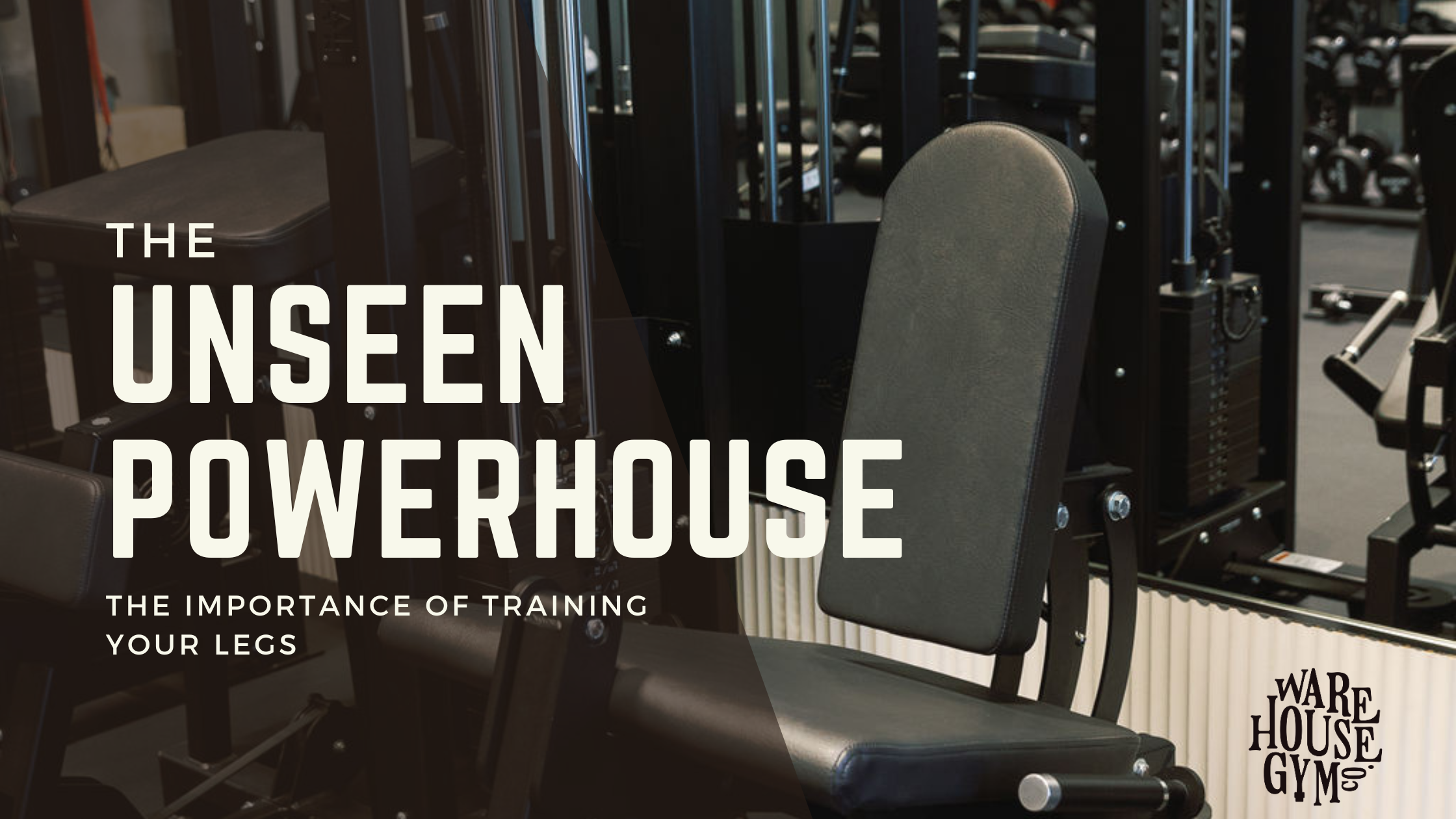The Unseen Powerhouse: The Importance of Training Your Legs
In the hustle and bustle of daily life, finding time to work out can feel like a luxury. For busy professionals juggling demanding schedules, squeezing in a gym session often falls to the bottom of the priority list. Yet, within this limited window of opportunity, many overlook one of the most critical aspects of fitness: leg training. Whether you're striving for weight loss, muscle building, or overall health improvement, dedicating time to train your legs is not just beneficial—it's essential.
The Foundation of Your Body
Legs are the foundation of your body, supporting you through every step, jump, and climb. They house some of the largest muscle groups, including the quadriceps, hamstrings, glutes, and calves. Training these muscles isn't merely about aesthetics; it's about enhancing your body's functionality and stability. Strong legs improve balance, reduce the risk of injury, and contribute to better performance in virtually every physical activity, from running to lifting.
For busy individuals, incorporating leg exercises into your routine can lead to significant long-term benefits. Efficient leg workouts can enhance your overall strength and endurance, making everyday tasks easier and less taxing. Imagine navigating your hectic day with more energy and less fatigue—leg training can make this a reality.
Efficient Workouts for Maximum Impact
One of the common challenges faced by busy people is the lack of time for long, drawn-out workout sessions. The good news is that leg training doesn't require hours in the gym. High-intensity, efficient workouts can deliver substantial results in a short period. Compound movements like squats, lunges, and deadlifts engage multiple muscle groups simultaneously, providing a full-body workout in a fraction of the time.
Consider incorporating a few of these exercises into your weekly routine:
Squats: A powerhouse move that targets the quadriceps, hamstrings, and glutes. Squats can be performed with body weight, dumbbells, or a barbell, making them versatile for any fitness level.
Lunges: Another effective exercise that works the major leg muscles while also challenging your balance and coordination. Alternate between walking lunges, reverse lunges, and lateral lunges for variety.
Deadlifts: This compound movement primarily targets the hamstrings and glutes while also engaging the lower back and core. Proper form is crucial to avoid injury, so start with lighter weights and gradually increase as you become more comfortable.
These exercises can be completed in a circuit format, with minimal rest between sets to maximize efficiency. A 20-30 minute leg workout, performed consistently, can yield impressive results over time.
The Calorie-Burning Machine
Leg training is not just about building muscle—it's also a powerful tool for weight loss. Because the leg muscles are so large, they require significant energy to function. This means that leg exercises burn more calories than exercises targeting smaller muscle groups. When you engage in high-intensity leg workouts, your body continues to burn calories even after you've finished exercising, thanks to the afterburn effect (excess post-exercise oxygen consumption, or EPOC).
For those struggling with weight management, incorporating leg training into your fitness routine can boost your metabolism and accelerate fat loss. The increased muscle mass from leg exercises also contributes to a higher resting metabolic rate, meaning you'll burn more calories even when you're not actively working out.
Building Consistency and Motivation
One of the biggest hurdles in any fitness journey is maintaining consistency and motivation. It's easy to start with enthusiasm, only to find your commitment waning as other responsibilities take precedence. Here are a few strategies to help you stay on track:
Set Realistic Goals: Begin with achievable objectives that fit within your busy schedule. Whether it's dedicating 15 minutes a day to leg exercises or committing to three full-body workouts a week, setting realistic goals helps build a sustainable routine.
Track Your Progress: Keep a workout journal or use a fitness app to log your workouts. Tracking your progress provides tangible evidence of your achievements, boosting motivation and reinforcing the habit.
Hire a Personal Trainer: For many busy individuals, hiring a personal trainer can be the key to staying accountable and motivated. A personal trainer provides expert guidance, ensures you're performing exercises with proper form, and tailors workouts to fit your specific needs and goals. This personalized attention can make a significant difference, especially when working out your legs, where good coaching is crucial to avoid injury and maximize effectiveness.
Mix It Up: Avoid workout monotony by varying your exercises and routines. Incorporate different leg exercises, try new fitness classes, or explore outdoor activities like hiking or cycling to keep things interesting.
Reward Yourself: Celebrate your milestones with rewards that support your fitness journey. Treat yourself to new workout gear, a massage, or a healthy meal at your favorite restaurant.
The Holistic Benefits
Beyond the physical advantages, leg training also offers numerous mental health benefits. Regular exercise, including leg workouts, has been shown to reduce stress, improve mood, and enhance cognitive function. For busy professionals, taking time to focus on physical activity can serve as a valuable mental break, helping to clear your mind and improve overall well-being.
Additionally, strong legs contribute to better posture and reduced lower back pain, common complaints among those with sedentary jobs. By incorporating leg training into your fitness regimen, you're investing in a healthier, more resilient body that can better handle the demands of your busy life.
In the grand scheme of fitness, leg training holds a pivotal role that extends far beyond the superficial. For busy individuals struggling to find time to work out, efficient and effective leg workouts can provide a wealth of benefits, from improved physical performance and weight management to enhanced mental well-being and daily functionality. By prioritizing leg training and adopting strategies to stay consistent and motivated, you can transform your fitness journey and achieve lasting results. Remember, your legs are the powerhouse of your body—give them the attention they deserve, and they will support you every step of the way.

